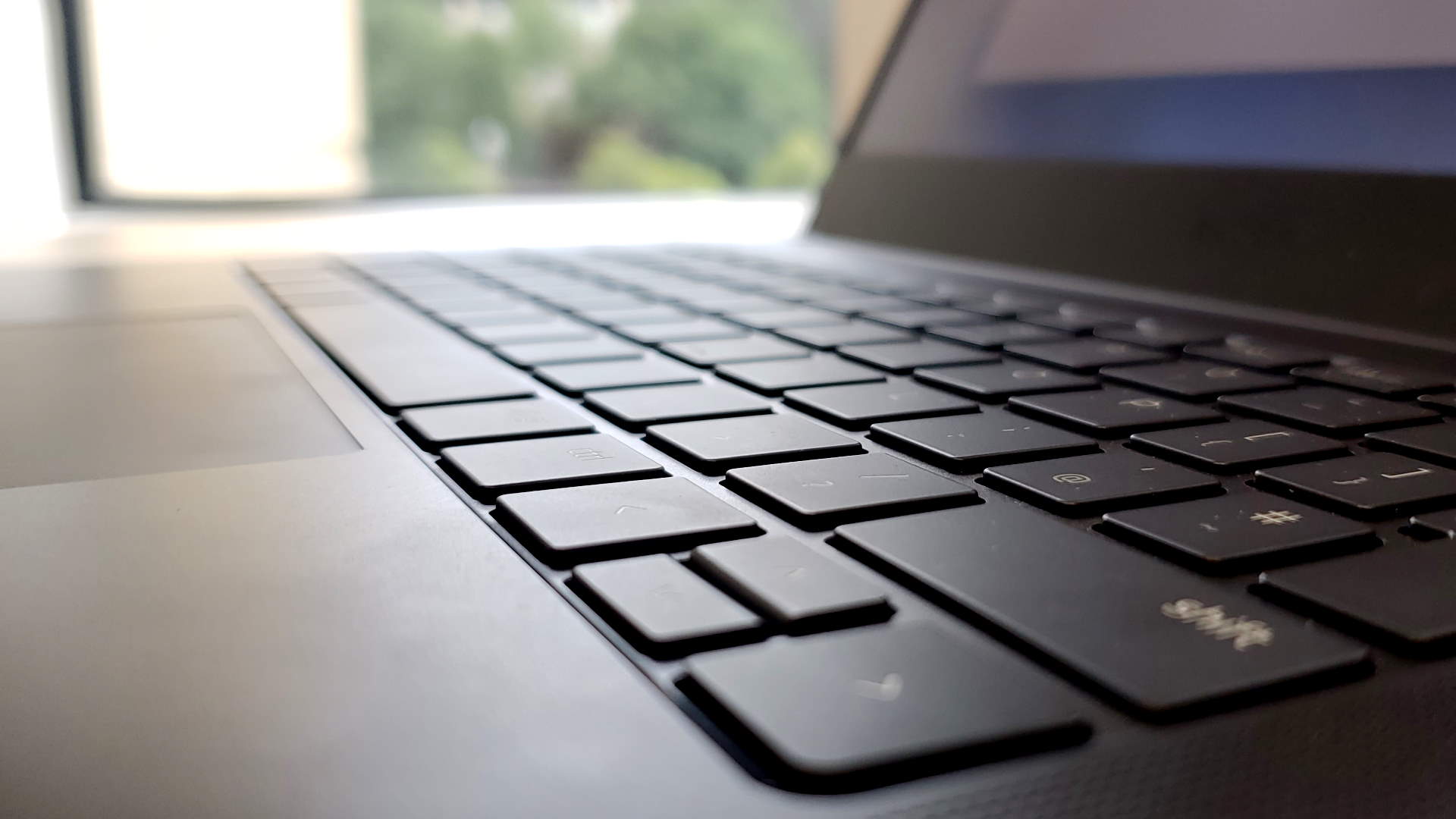Our Verdict
Not a lot has changed since the first-gen Blade 14, and maybe this RTX 3070 Ti spec is too expensive for me, but it does make for a stunning, small form factor gaming laptop. And I am absolutely sold on the 1440p screen at the 14-inch scale, too. It's pin-sharp, bright, and colourful. The price premium is tough to swallow in relation to the similarly performing Asus G14 and for that reason, the RTX 3060 Blade 14 still feels like the better value, better-balanced machine to me.
For
- Beautiful CNC chassis
- 165Hz QHD panel is excellent
- RTX 3070 Ti delivers at native res
Against
- A lot for an RTX 3070 Ti laptop
- C'mon, 2TB SSD for this money please
- Soldered memory
- Stylish chassis hurt by that big green logo
PC Gamer's got your back
The Razer Blade 14 has all the things I want from a modern gaming laptop. It's got a mighty CPU, powerful graphics chip, gorgeous high-res, high refresh rate screen, and a good chunk of speedy storage. But, above all, the Blade 14 offers genuine portability, something so many gaming laptops eschew in favour of greater screen real estate and chonkier keyboards.
But there's no need, people, because the 14-inch form factor has got it all nailed, because no one needs a bigger display when they're out on the road. I know of no one who wished they'd picked a larger, heavier notebook when they're lugging it around from place to place, spine straining at the bulk of a beefy gaming laptop.
And if you still want a laptop to fit in with your minimalist desktop aesthetic at home, but need a larger screen while you're sitting in your black polo neck and sipping espressos out of an egregiously tiny cup, there are plenty of practically bezel-free gaming monitors you can pick from that will gel perfectly with a smaller laptop and a pretentious working space.
Though I understand why the 14-inch form factor hasn't taken off in the past, and it's all about power. The smaller the laptop, the less space for cooling you have, and the less likely you are to be able to enjoy the fruits of powerful graphics silicon because the device simply can't cool them. That and battery life takes a massive nose dive, too.
But, unlike their desktop counterparts, modern gaming laptop components are a lot more capable of dealing with the limitations of a smaller form factor than previous generations. And that's made the 14-inch gaming laptop an ultra-desirable device, and a super-capable one, too.
Razer wasn't the instigator for this, however. Asus has to take credit for taking a punt on the smaller scale with its wonderful ROG Zephyrus G14. The G14 combines a svelte chassis, with smart cooling, and powerful gaming components. And, for reasons which have yet to become clear, it has an LED light display baked into the back of the lid.
It was also an impressively affordable device when it first launched. That's changed a little in 2022 given the shifts in the market, which has made the G14 a more premium-priced device, though it's barely changed in actual design.
Razer wanted a piece of this G14 pie, and so released the Blade 14 last year as not only its first 14-inch notebook in an age, but also its first-ever AMD gaming laptop. But mostly it was the machine designed to take down Asus' Zephyrus G14.
This 2022 edition sports the latest Ryzen 6000-series CPU, and adds the more recent RTX 3070 Ti and RTX 3080 Ti to the family. But other than that we're looking at a machine that is functionally identical, and the only place where that is an issue for me is that there's still that big green backlit logo on the lid. I would much rather have the subtle styling of Blade 13 Stealth.
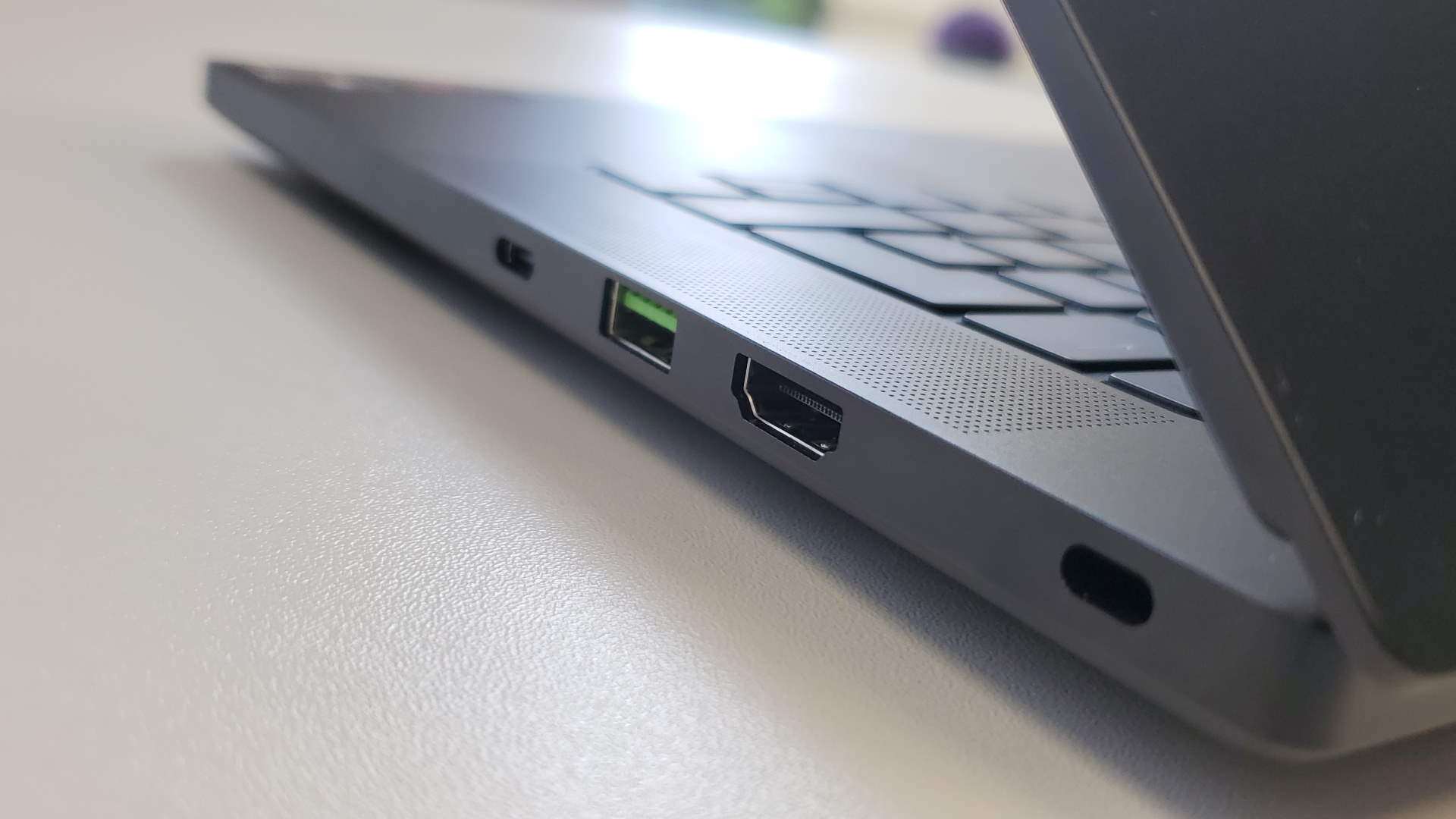
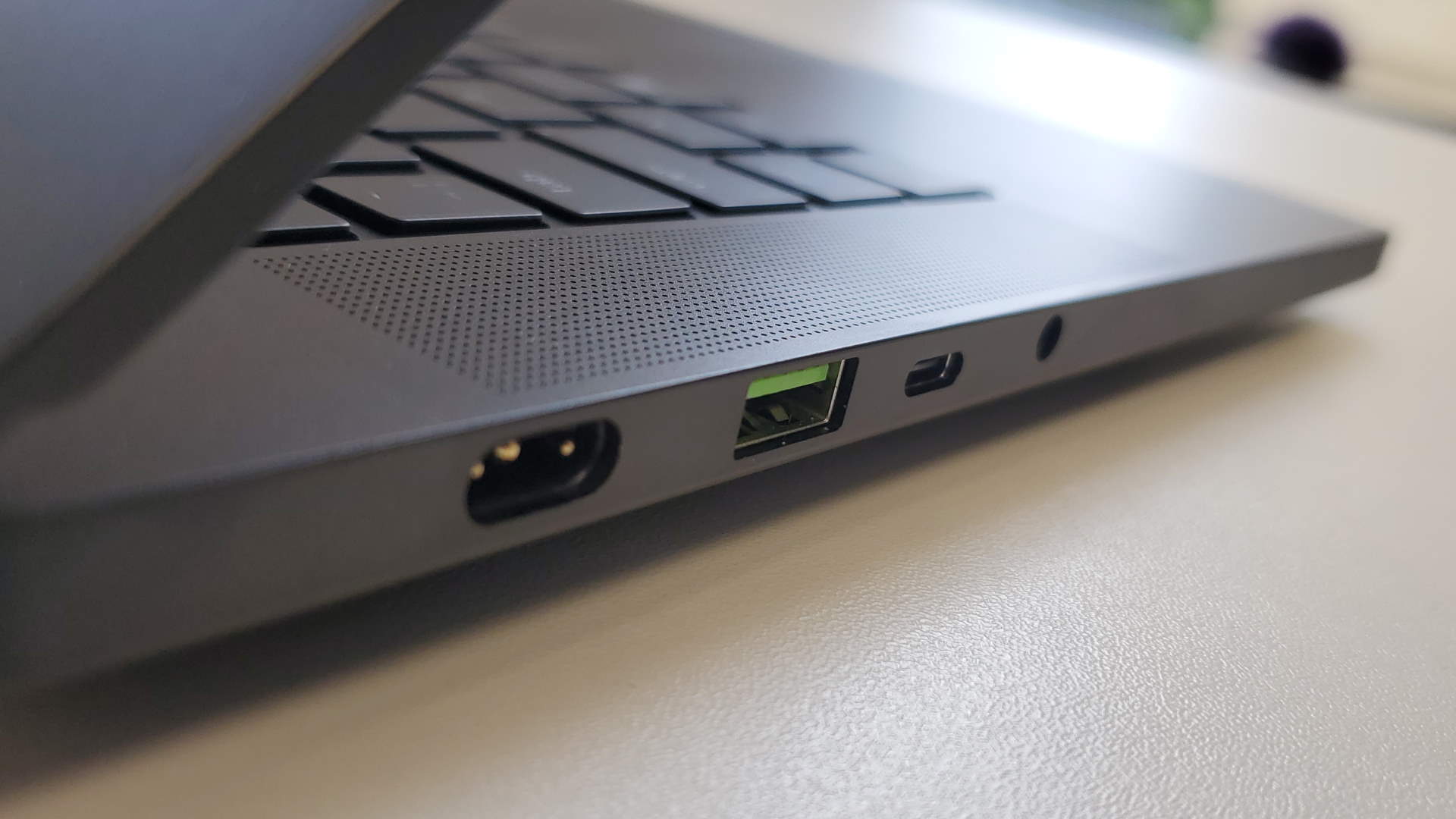
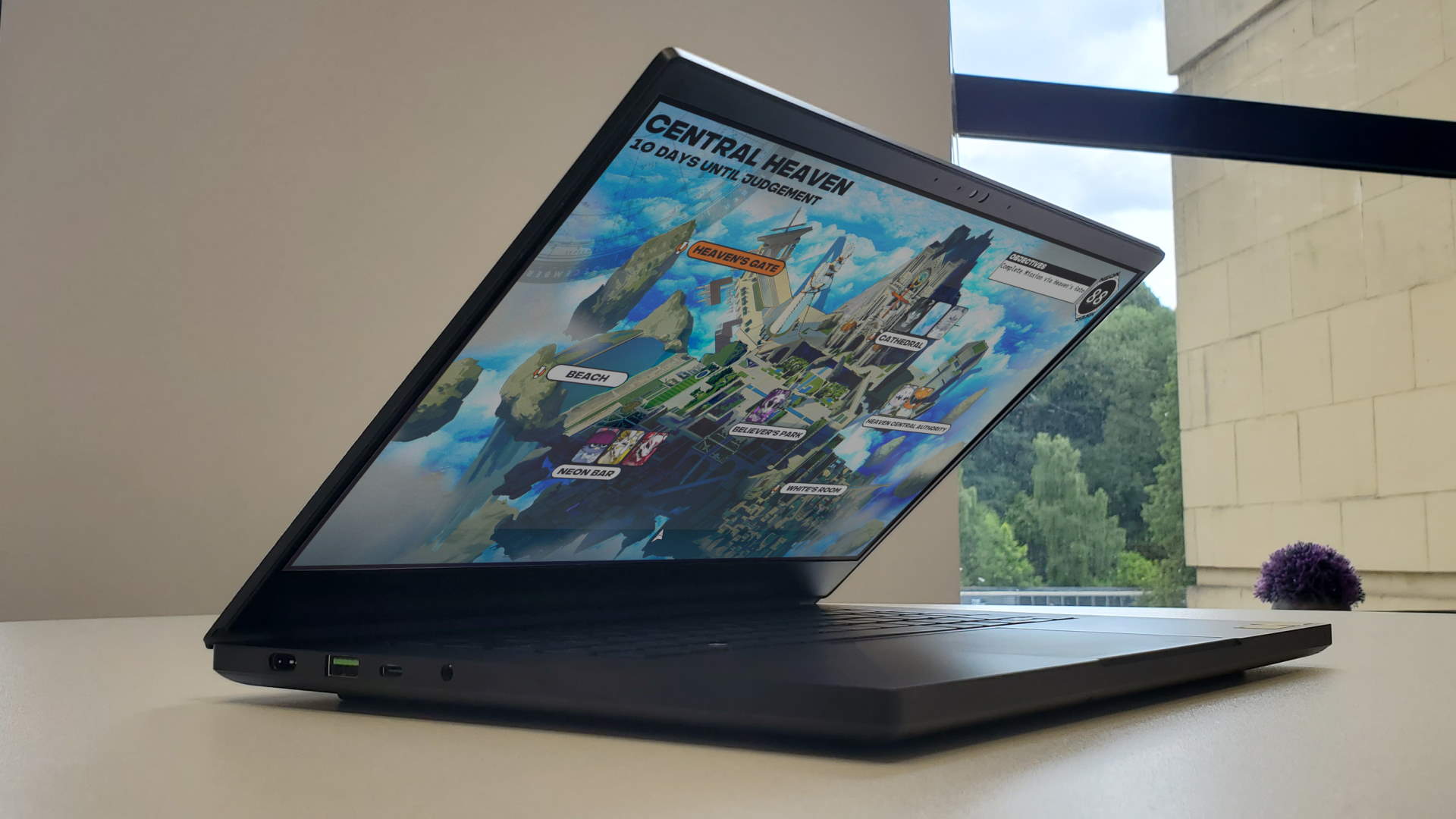
You're really paying a premium for the Razer system.
This Asus and Razer head-to-head though has led to a split in the PC Gamer hardware team. Jacob is firmly in the overly plastic G14 camp, while I am far more taken by the restrained black aluminium aesthetic of the Blade 14. Both are excellent machines, and you'd not be upset taking either one back to meet the family, but obviously, Jacob's wrong. The Razer is just the machine that appeals far more to me, though that is probably more to do with my personal aesthetic preferences than anything else.
Certainly not in terms of benchmarks. Because while they are close, the Asus machine is the more capable in raw frame rate and memory bandwidth terms.
The Blade 14 is, however, the more expensive machine—more so in the UK than in the US—which means you're really paying a premium for the Razer system. And when you look at the benchmark performance side-by-side that's tough to swallow.
Such frustration is exacerbated by the fact the 16GB soldered memory and 1TB aren't customisable with Razer where they are with the Asus machine. Though sometimes to a baffling extent. I mean, a G14 with 40GB of RAM is just weird.
The AMD RX 6800S of the G14 we've tested matches up perfectly with the RTX 3070 Ti Razer has in its machine, offering performance within a few frames of each other; though with the Radeon chip sneaking ahead in plenty of titles. Both offer excellent 1080p gaming performance and are capable of delivering high enough frame rates to make gaming at their respective native resolutions absolutely doable.
1080p gaming performance
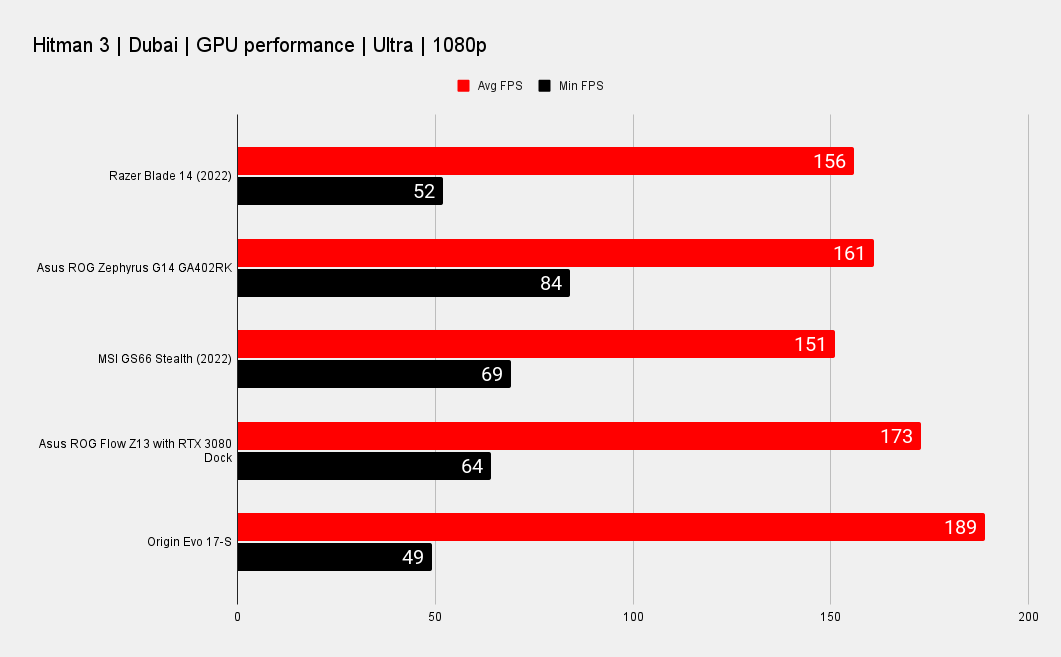


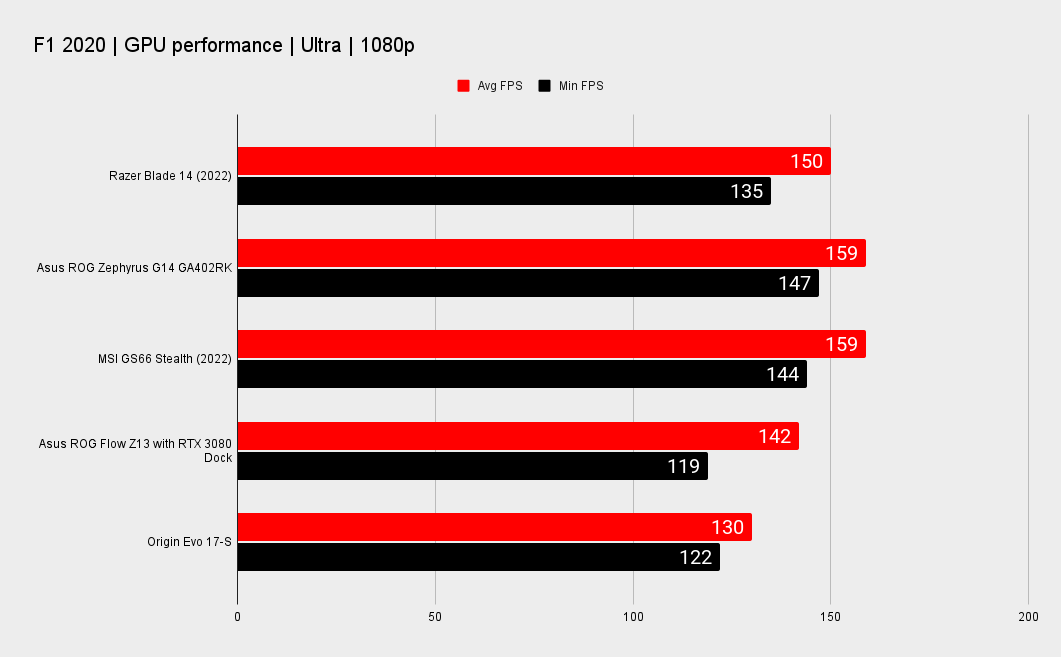
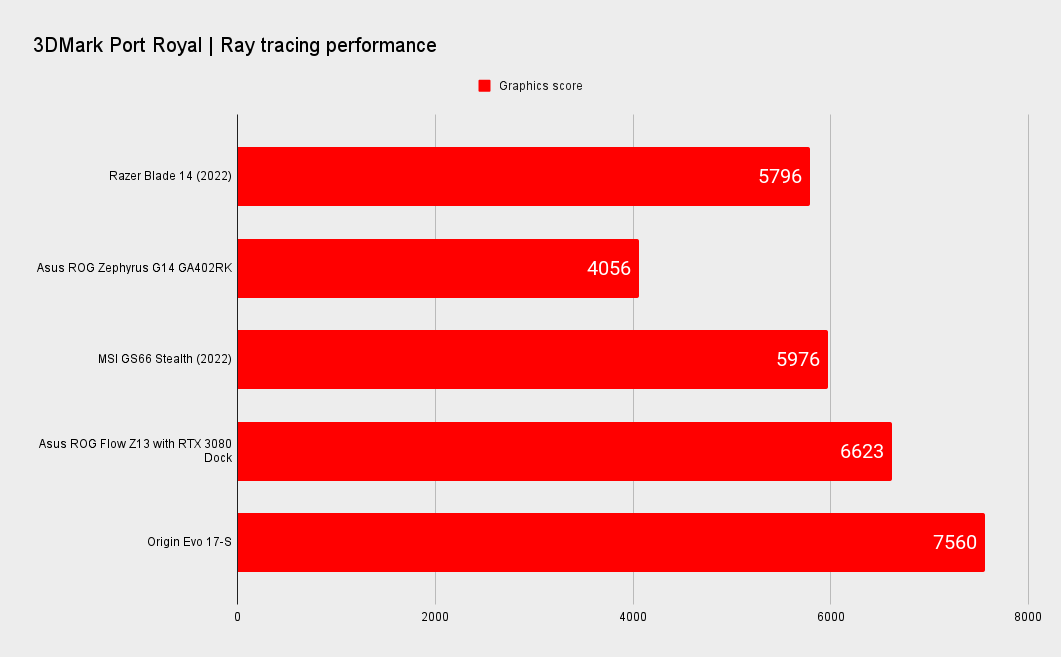
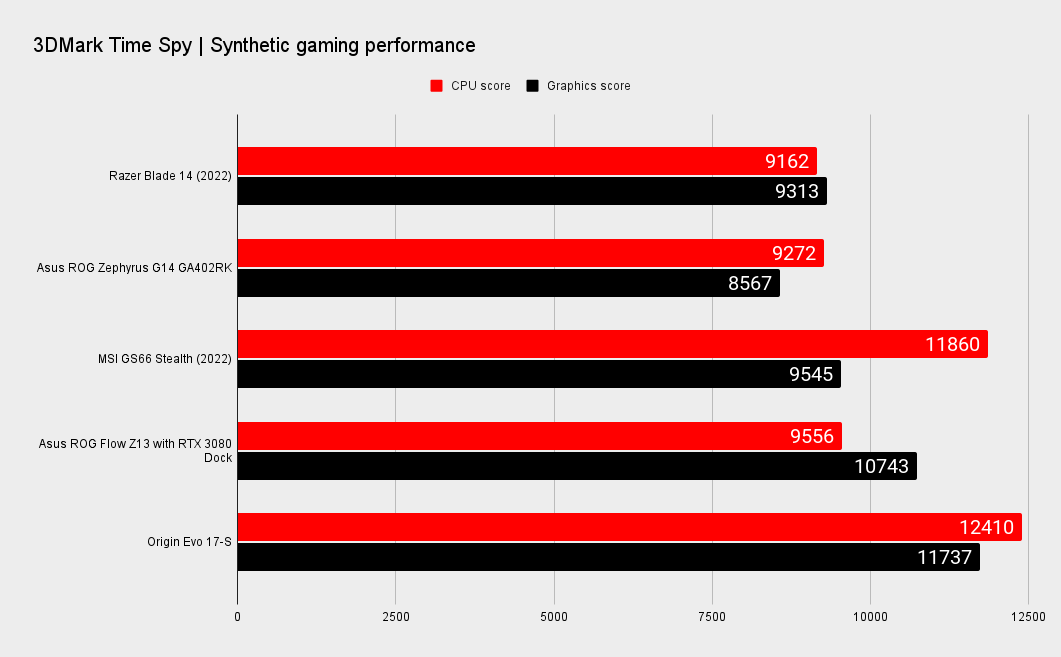
The 2560 x 1600 res of the G14 is a little taller than the 2560 x 1440 native resolution of the Blade 14, but both GPUs are going to have you gaming at speeds that will belie the fact you're running on a slimline mobile machine.
Though, in all honesty, I don't think we'd recommend you buy either system with the graphics cards we've reviewed. I'm impressed with how well the Razer chassis does at chilling the Nvidia GPU, running it far cooler than the RX 6800S in the G14, but it's still toastier than the RTX 3070 Ti in the MSI GS66 Stealth, which is actually running at a higher 105W TDP. The Razer's RTX 3070 Ti is set at 100W, for reference.
And with performance being so inextricably linked to thermals, that means the Blade 14 is running a little slower than the MSI machine, which is itself a pretty slimline system.
System performance
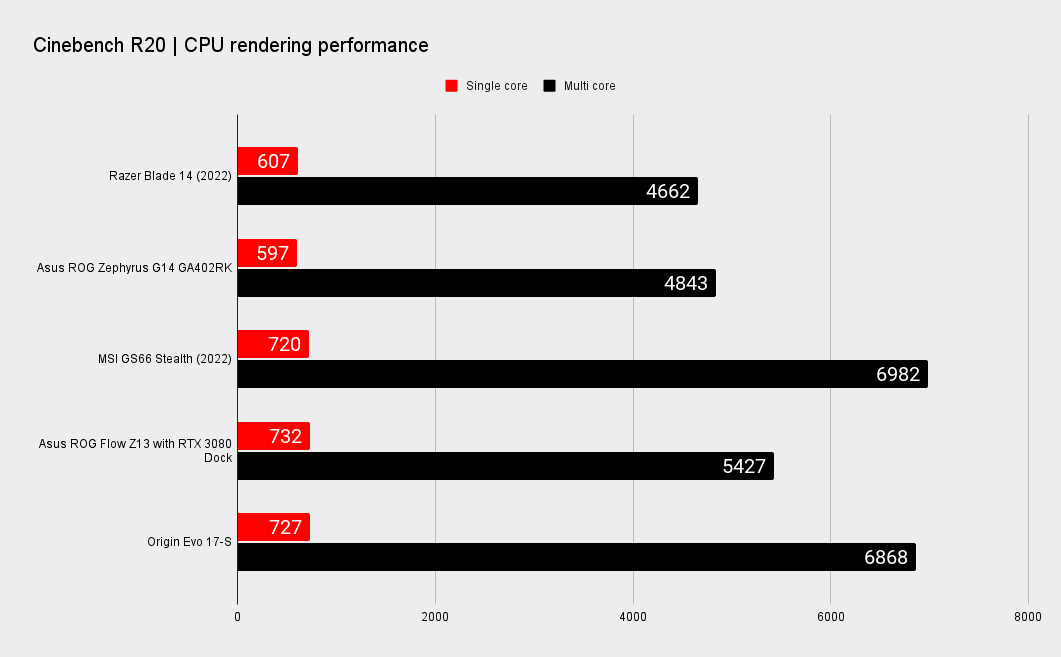
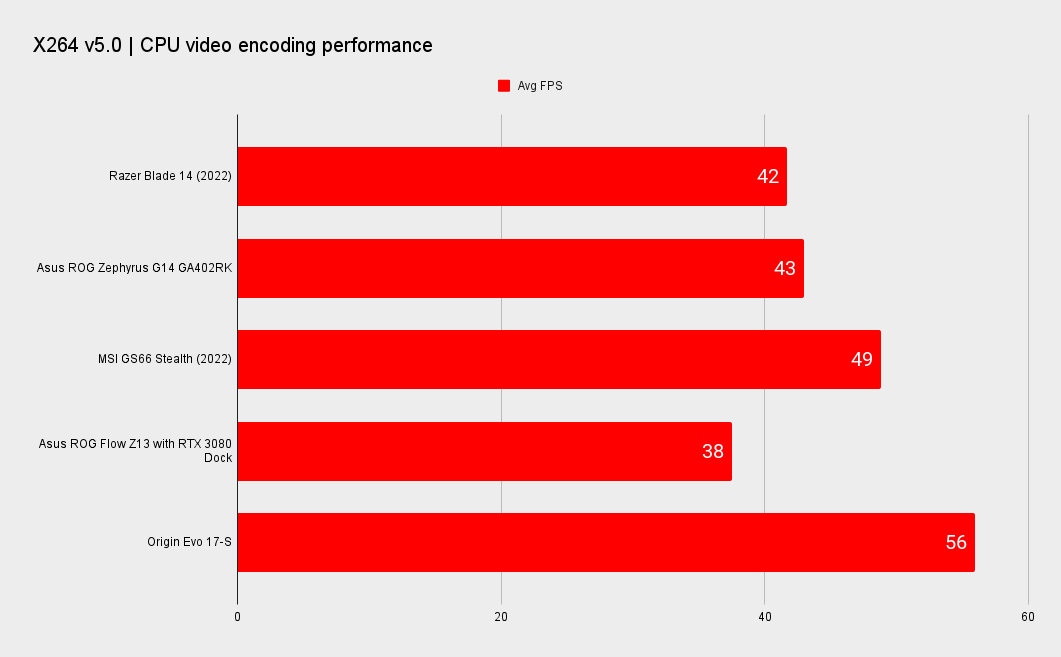

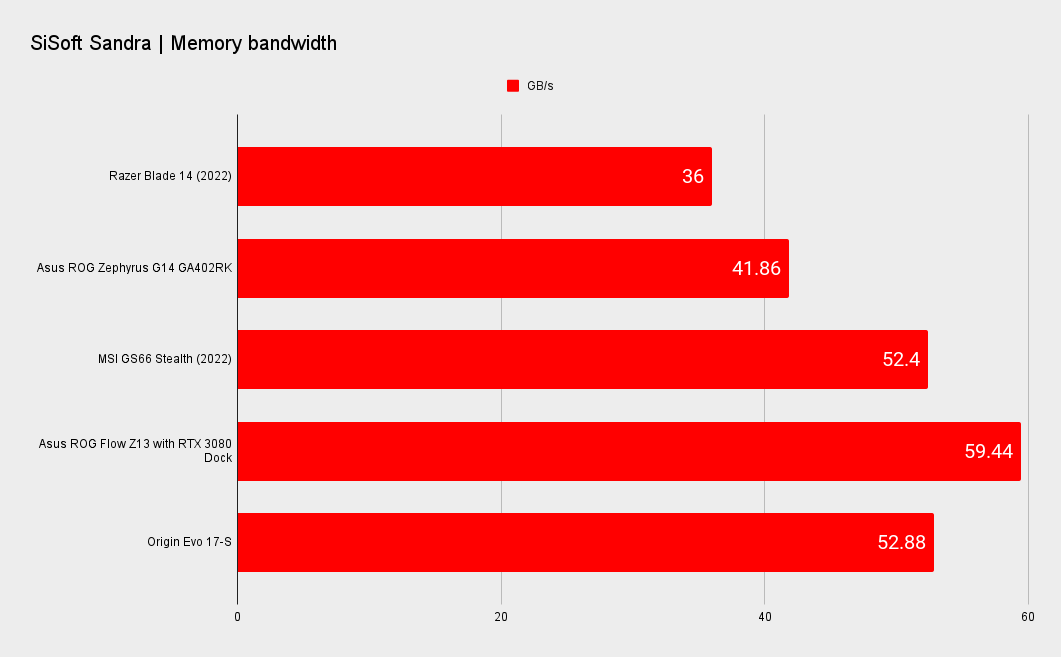

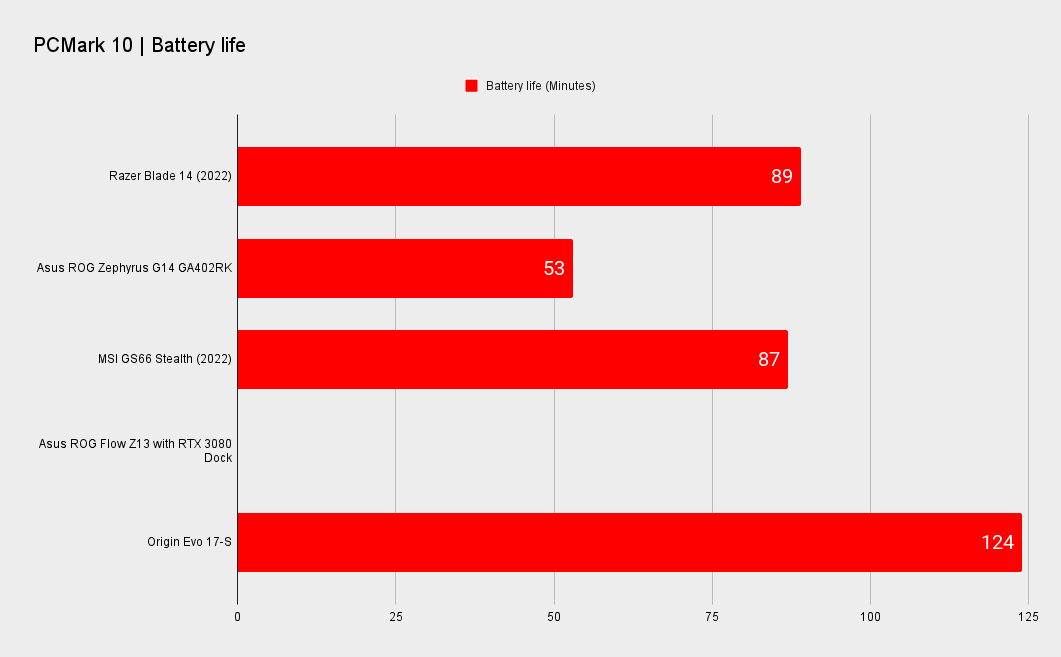
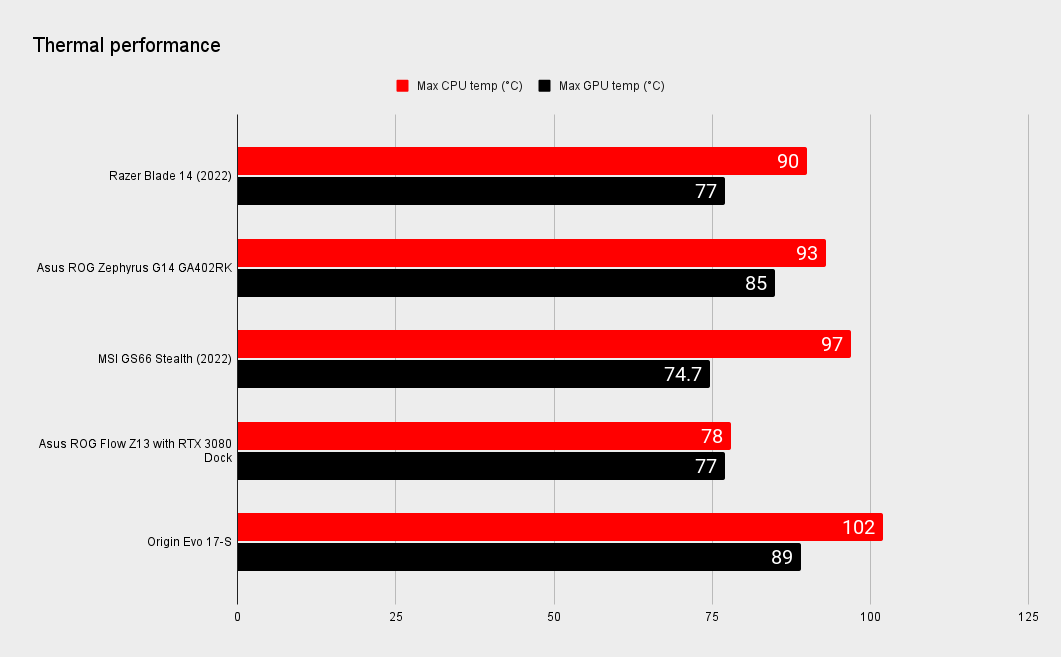
I'm astounded that even when we've had 4K laptops for years it's only recently that 1440p panels have made it into PC laptops.
Personally, I preferred the RTX 3060 version of the Blade 14 I checked out last year. It was a touch cooler, didn't need to spin the fans up quite so much, and the lower-spec GPU didn't leave as much performance on the shelf because of its size. It's also cheaper, and when this version costs an eye-watering $2,600 (£2,700) the $600 you're then saving makes it worth considering.
The battery performance of the 2022 Blade 14 is impressive, however, and offers almost twice the gaming uptime of the Asus G14, and even a touch longer than the MSI GS66. It's a little shy of 90 minutes, so still nothing to really be writing home about. For all we might be ragging on the Steam Deck's battery life when it can only deliver three hours of gaming, that's still well beyond what most gaming laptops can do.
You are also getting the 165Hz QHD screen with this version of the Blade 14, where the RTX 3060 machine only comes with a 144Hz 1080p panel.
And it is worth talking about that 1440p Razer screen. Aside from some typical IPS weakness when it comes to black levels, it's delightful. I can barely believe it's taken this long for the 14-inch form factor to become a thing, but I'm astounded that even when we've had 4K laptops for years it's only recently that 1440p panels have made it into PC laptops. They're the perfect fit for smaller designs—because of the increased pixel pitch—and don't have the extra GPU burden that a 4K panel has.
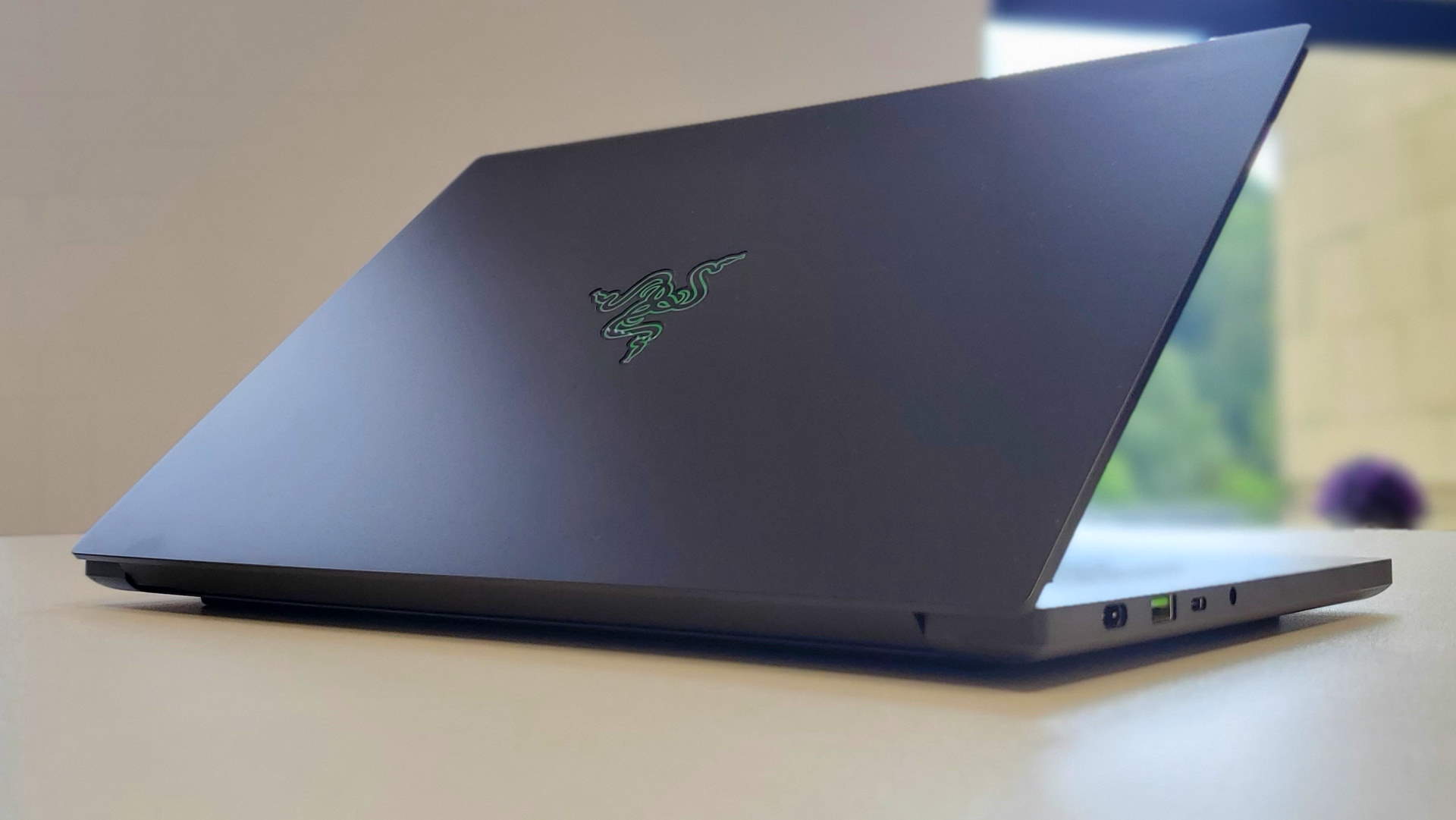

As an all-round package, the Razer Blade 14 is a beautiful machine, though I am going to say that if I am paying this sort of money I don't know why I'm still only getting 16GB of memory and a 1TB SSD for my near three grand down. The RAM is soldered on, too, so there's no hope of an upgrade down the line. While I may not need 32GB RAM, I absolutely want a 2TB SSD for that price.
The pricing of the Blade 14 is painful, then, as it ever is for Razer gaming laptops. But I still can't help but love this little machine as a mobile device, and personally, I think it's the most desirable gaming laptop on the market.
The GPU might be a little rich for my blood, but there's also no denying that it delivers a great gaming performance at the native resolution of this pin-sharp screen. And the fact that it is actually able to cool such a powerful GPU in this slimline form factor will definitely appeal to many. For me, the overall balance is off in this particular spec, but if I'm in the market for a gaming laptop I'd be picking from the Blade 14 family for sure.
Not a lot has changed since the first-gen Blade 14, and maybe this RTX 3070 Ti spec is too expensive for me, but it does make for a stunning, small form factor gaming laptop. And I am absolutely sold on the 1440p screen at the 14-inch scale, too. It's pin-sharp, bright, and colourful. The price premium is tough to swallow in relation to the similarly performing Asus G14 and for that reason, the RTX 3060 Blade 14 still feels like the better value, better-balanced machine to me.

Dave has been gaming since the days of Zaxxon and Lady Bug on the Colecovision, and code books for the Commodore Vic 20 (Death Race 2000!). He built his first gaming PC at the tender age of 16, and finally finished bug-fixing the Cyrix-based system around a year later. When he dropped it out of the window. He first started writing for Official PlayStation Magazine and Xbox World many decades ago, then moved onto PC Format full-time, then PC Gamer, TechRadar, and T3 among others. Now he's back, writing about the nightmarish graphics card market, CPUs with more cores than sense, gaming laptops hotter than the sun, and SSDs more capacious than a Cybertruck.
